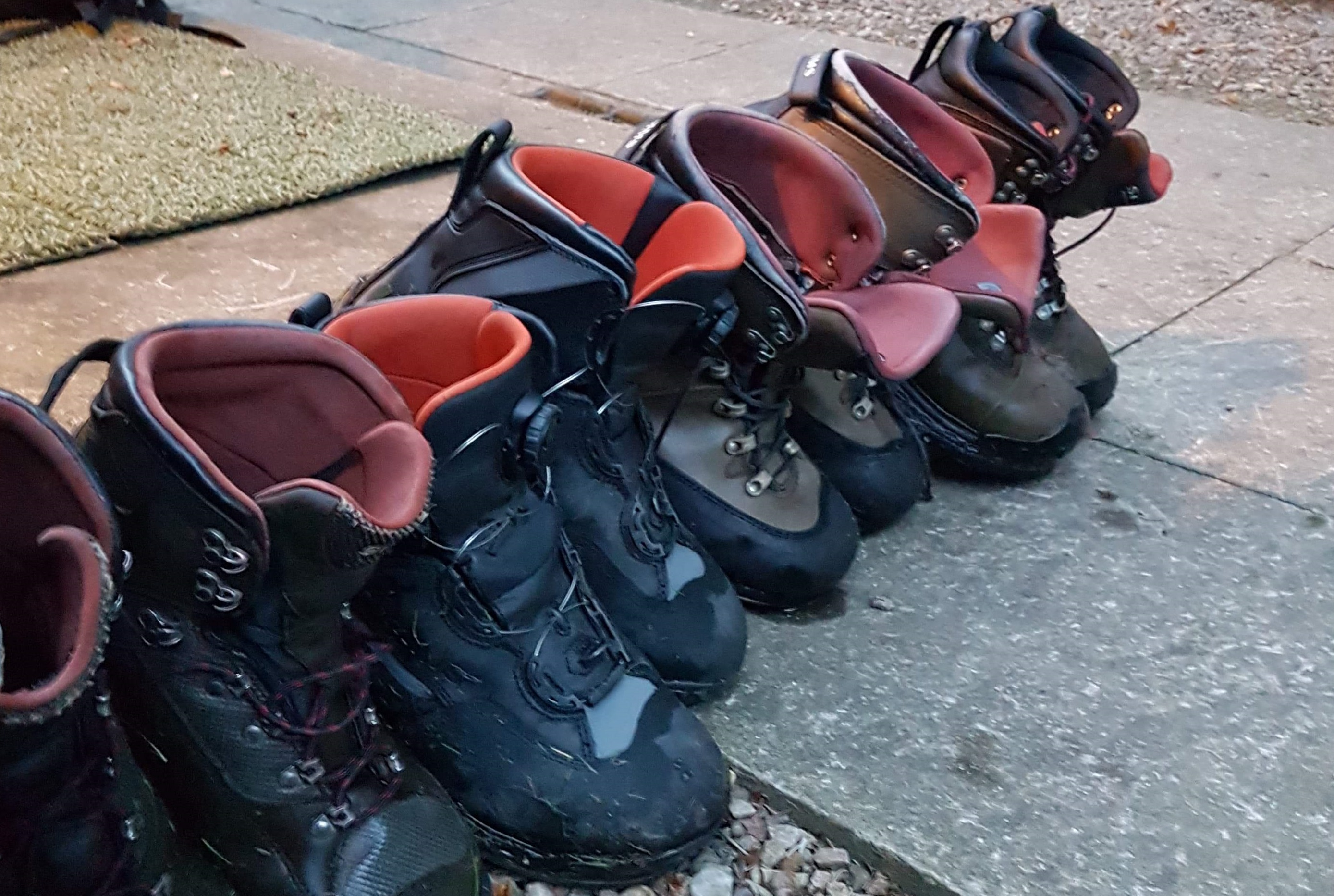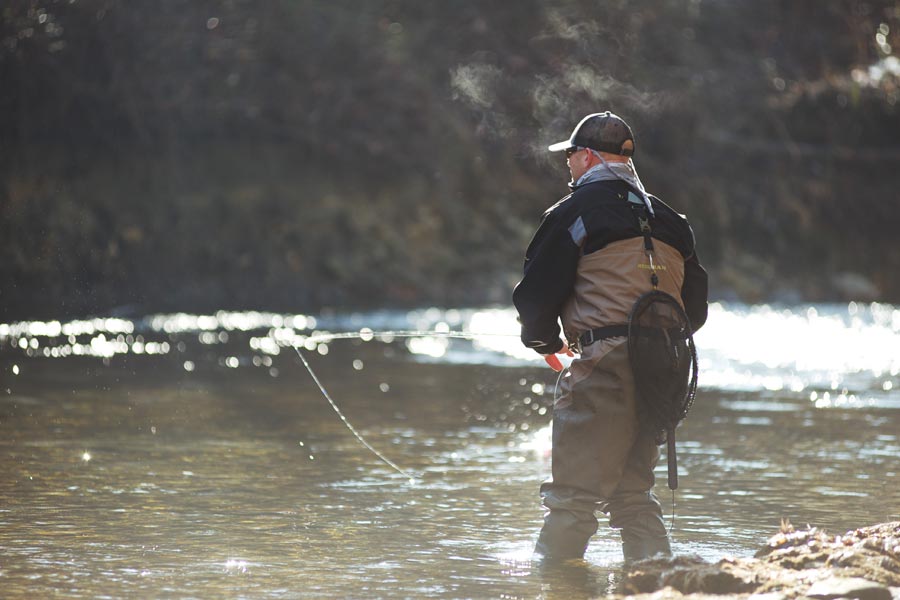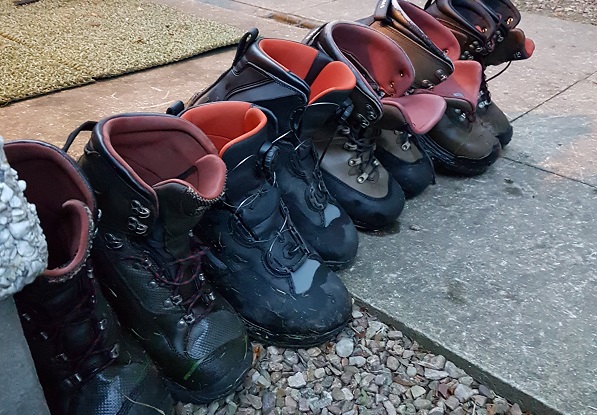When you buy new stockingfoot waders, the chances are the next thing on your shopping list is a pair of good wading boots. Quality wading boots with non-slip soles play a vital role in determining whether you fish, or ironically being the one fished out of the water.
Different Wading Boot Sole Materials
Having a good sole is essential for making sure your feet stay firmly planted on the ground at all times, whether on the bank or in the water. With a number of different soles available it can be a little mind-boggling to which one is the most suitable. However, each has distinct advantages on particular terrains.
Rubber Sole
It’s not unusual for anglers to walk miles into remote areas to locate remote fishing spots. This is where rubber soles with good traction and resistance to abrasion come into their own VS felt soles.

The rubber used on wading boots is specifically designed to provide better traction on unstable surfaces. A slightly softer variant of rubber found on hiking boots, it’s malleability allows it to increase its surface contact and deliver that extra essential grip on slippery rocks.
Benefits:
- – Versatile, best mixed-ground grip
- – Easy to Clean
- – Durable
- – Studs can be added
Felt Sole
Felt soles include a thick layer of felt attached to the bottom of the boot. As the felt makes contact, it moulds and compresses to the shape of the object. This provides maximum surface contact, and maximum traction.

Whilst offering what many believe as best in class in terms of traction in water, they can be challenging to walk in along muddy bankings.
Benefits:
- – Great stability on slippery freestones, rocks and gravel
- – Lightweight and may offer more feeling through you feet
Studded Soles
Studded soles can deliver a surer footing on a number of surfaces, and is an option for both rubber and felt soles. If you are thinking of wading in deeper, faster rivers it’s worth considering studded soles that can give that little bit extra grip.
TOP TIP: If you’re wearing waders in a boat, avoid studded soles as they may cause damage to the flooring of the vessel.

Studded screws can be used on some felt and rubber soles, which can make these boots a lot more versatile in the applications they can be used.
Benefits:
- – Great on grassy banks and mud
- – Great on wet or slimy rocks
Style, Design & Materials
If you are new to fishing you might be wondering why your boots are flooding full of water. They are specifically designed to do this, as it provides greater stability and control in the water. The majority of boots have drainage holes and/or advanced drainage channels built into their midsoles to decrease drainage time, making it easy for the wearer when they are moving out of the water.

Styles
There are a variety of styles of wading boots available, from lightweight sneaker-like styles to heavy-duty hiking boot types. Knowing what type of style of fishing you’re going to be doing will dictate which boots are the most suitable. The lightweight style is most suitable for low water streams or beaches where foot placement is easy. The heavy boot style is more durable and ideal for walking longer distances and traversing over obstructions.
Materials
Wading boots are designed to take a beating, and the materials used are specifically selected to bear the impact of jagged rocks, logs, and other objects. A lot of boots utilise tough, durable material that allows water flow freely in and out of the shoes without absorbing it.
Less expensive boots tend to be made out of one particular material, whilst more expensive types use a combination of synthetic leather and nylon. Most boots usually have triple stitching with nylon thread so the boots can endure the rigours of wading life.
Lacing
Over time the one part of the boot which is likely to fail is the laces. This component has to put up with a lot of stresses and wear whilst being soaked in water. However, it is simple to replace laces with a high-quality replacement.
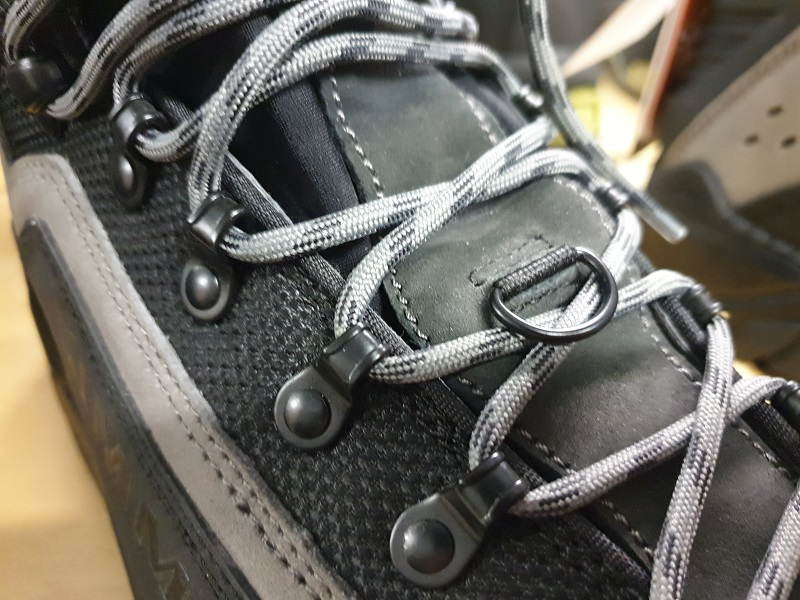
Sneaker type booties are slightly different as they tend to incorporate a zip system instead of laces.
Some manufacturers also use BOA fit systems on their products. This unique system is ideal for anglers with limited mobility ie. Hip or knee problems or even suffer from arthritis in their hands. The BOA system eliminates the amount of movement usually required to tie shoelaces. The system uses a push and pull mechanism to engage or disengage the system, while a simple turn in a clockwise or anti-clockwise motion will see the boot tighten up or loosen off.
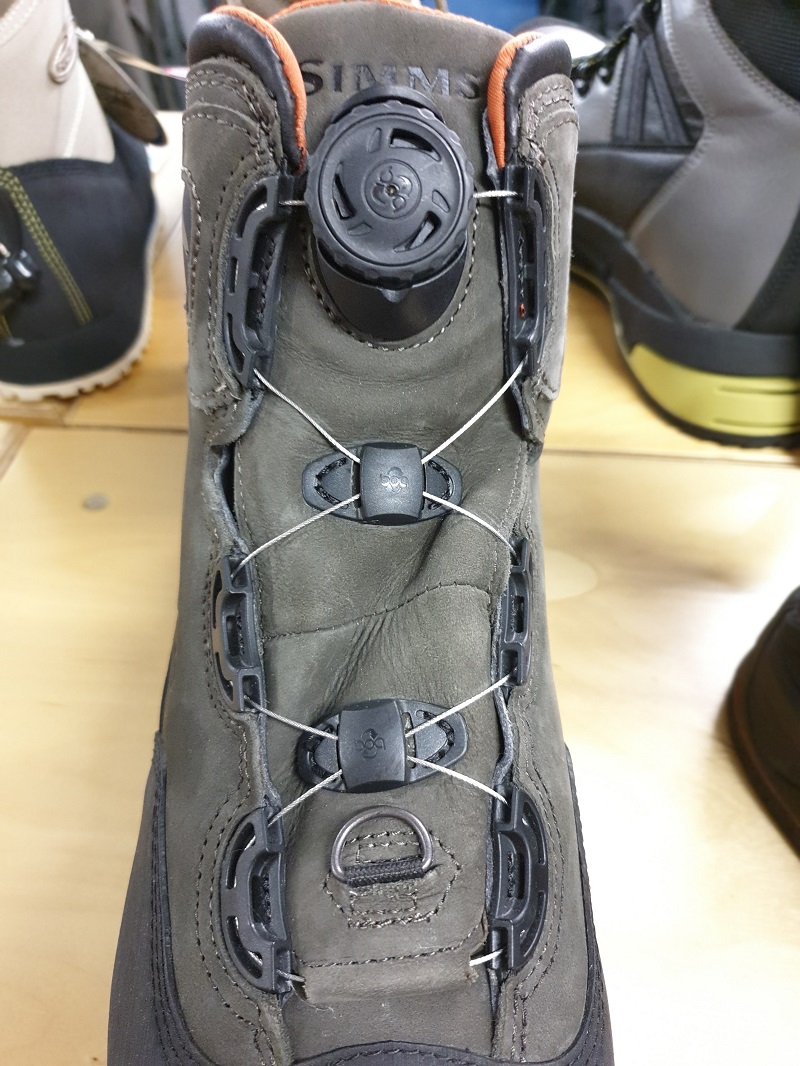
BOA Lace System
Ankle Support
Like hiking, sometimes you will be navigating over rocks and hollows, except more often than not visibility is reduced or impaired by the clarity and diffraction of water. It is important that wading boots have the right ankle support so that you don’t end up spraining or even breaking your ankle.
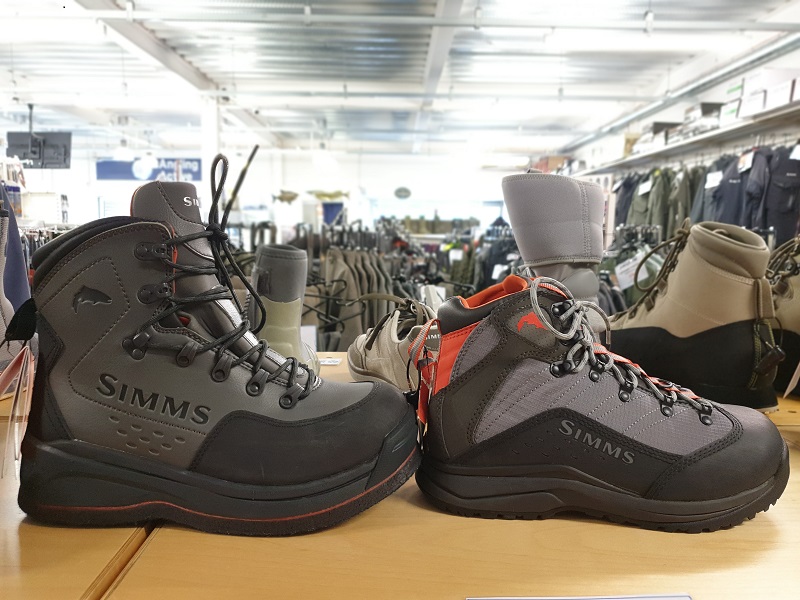
Most wading boots have a firm heel with a sturdy collar that supports the ankle and helps to prevent it from rolling. Your foot should be fastened properly, allowing no internal movement. If your heel lifts whilst you are walking, this means you are not getting adequate support and may experience chafing. To overcome this try adding additional layers of socks.
Sizing and Fitting
What can be worse when you’re excited about your order and have a day out fishing in the water planned. It is best to take your time and select the right sizing, as some manufacturers approach their sizing differently from others.
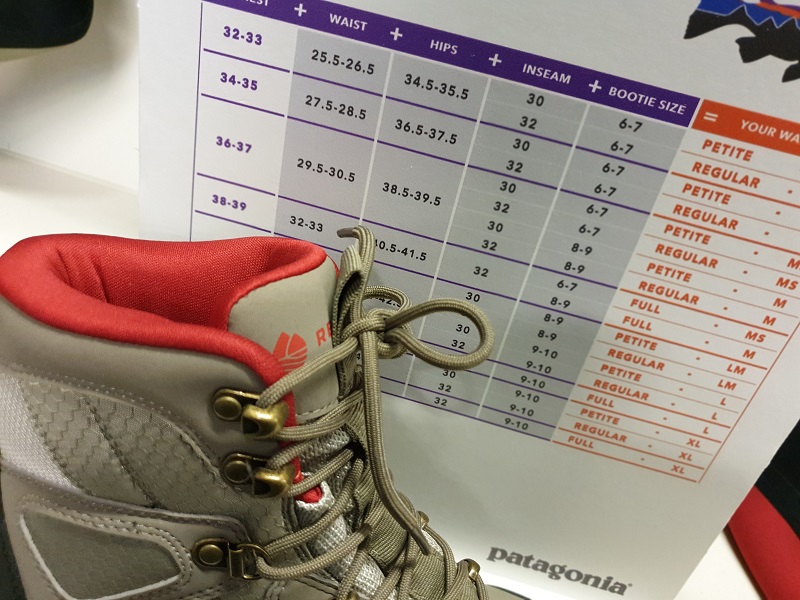
Because Neoprene stocking feet take up the extra room some manufacturers require you to choose a size bigger, whilst other manufacturers have adjusted their sizes to reflect this.
Features
- • Gravel guards help to protect the wading material and seams from sharp gravel that may impact it.
- • Vibram IdroGrip is a compound of high-quality rubber licensed by Simms.
- • Removable inner soles allow you to exchange the soles for types that can offer more insulation or comfort.
- • Cleats in the outsole are protrusions on the outsoles face giving extra traction. The pattern and depth vary from each manufacturer and product.
- • Reinforced to and heel caps help to protect your foot from accidental bangs against rocks or other objects.
Care
Whilst made to be immersed in water, wading boots will last longer if regularly cleaned and aired. After using them be it in the sea or a river, clean the boots with freshwater and scrub with a brush to remove any dirt. After allowing the boots to dry gradually, then store them in a dark dry place.
Always check and follow the manufacturer recommendations for best care of their products, as there can be slight variations from one to another.


